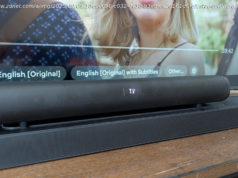Yesterday, to a somewhat unexpectant world, Microsoft unleashed a new operating system: Windows 10 S. The company would of course prefer that you didn’ t think of this as it having a second stab at Windows RT, but it’s hard to ignore the fact…
Yesterday, to a somewhat unexpectant world, Microsoft unleashed a new operating system: Windows 10 S. The company would of course prefer that you didn’ t think of this as it having a second stab at Windows RT, but it’s hard to ignore the fact that that’s basically what’s happening.
This is, after all, a copy of Windows that is only capable of running apps downloaded from the Windows Store. Microsoft is placing a good deal of emphasis on the performance and security the operating system offers, but with the option of unlocking Windows 10 Pro (for a fee, of course) , is this just a sneaky way for Microsoft to take advantage of unsuspecting laptop-buyers on a budget?
What Microsoft touts as the strengths of Windows 10 S and its associated hardware (well, most of it) — cost, security, performance — also count against it. There’s little to argue with on the performance side of things — unless benchmarks prove otherwise — but this plays into the cost side of things. Couple low cost with decent performance, and you have an appealing laptop on your hands, particularly if there’s decent battery life. For this reason, Windows 10 S systems are almost certain to be a success outside of the classroom where Microsoft hopes to take on Google’s Chromebook.
But it is security that comes at a price.
For Microsoft, increasing security means decreasing options. As mentioned, out of the box Windows 10 S will only allow for the installation of apps from the Windows Store. So far, so iPad. Apple does much the same with its tablet — which it increasingly pushes as a laptop alternative. But there are key differences. People buying an iPad are not doing so because it’s a cheap piece of hardware. Far from it. They are also not buying it with OS X S or macOS S installed; it has iOS installed, clearly marking it apart from Macs and MacBooks. Users will reasonably expect that it will act differently.
The same cannot be said of Windows 10 S. The concept is potentially confusing for consumers, and potentially lucrative for Microsoft.
Apple has proved that a walled garden app store can work. But it has not really worked for Microsoft yet. When most people think of Windows, they think of the ability to visit a website for a piece of software so they can download and install it. (Clearly this is not the first thing they think of, but it’s what most people will expect) . As such, someone with an iPhone or iPad may well buy themselves a Windows 10 S system and set about the task of installing iTunes. Except they won’ t be able to, because iTunes is not in the Windows Store.
But wait!
Don’t forget, that crippled operating system can be transformed into Windows 10 Pro! Just hand over your $50 and you can install iTunes. Cinderella shall go to the ball!
Microsoft could make a small fortune by squeezing half a Benjamin out of users hoodwinked into buying something that doesn’ t quite meet their needs.
Of course, Apple — and others — could take advantage of Desktop Bridge (aka Project Centennial) and convert desktop software into Universal Windows Platform (UWP) nuggets. But will they? And how long will it take?
With $50 unlock fees rolling in, Microsoft won’ t be in a rush to incentivize software developers.
Image credit: studiostoks / Shutterstock






